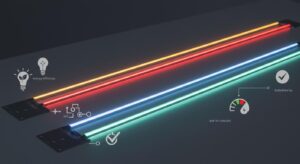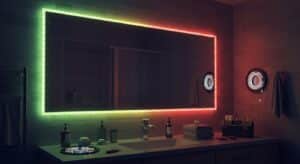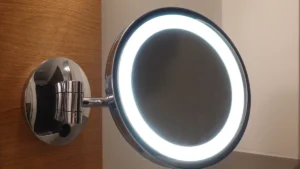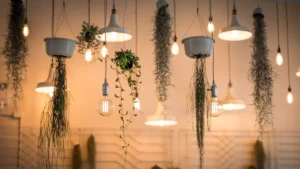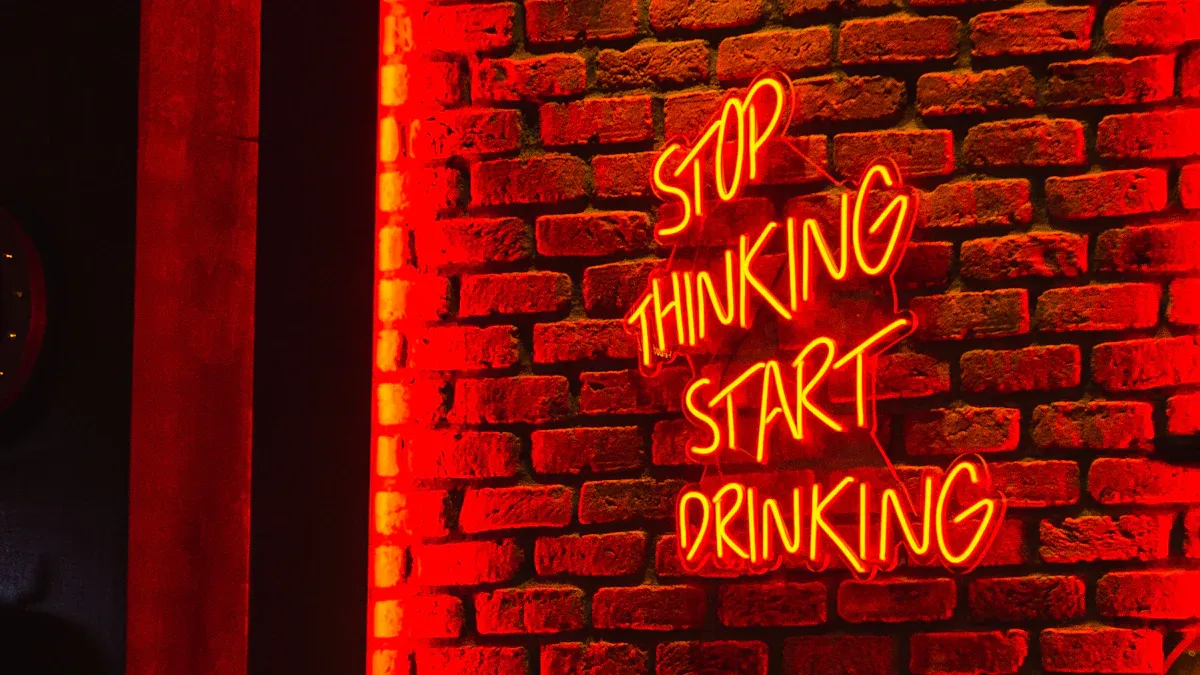
Properly installing LED light bars is very important. It affects how well they work and how they look. As you learn about these useful lights, you will see they are becoming more popular. The global market for LED light bars is expected to reach a huge US$ 1.2 billion in 2025. It is also predicted to grow by 5.7% from 2025 to 2032. This growth is clear in cars, where saving energy and being flexible increases demand. Choosing the best LED light bar for you will improve your space, whether at home or while driving.
Key Takeaways
Pick the best type of LED light bar for your needs. You can choose from straight, curved, mini, or work light bars.
Think about important features like brightness, colour temperature, beam pattern, and how strong it is when you choose an LED light bar.
Follow a clear installation process. Make sure you have all the tools you need. Also, check the connections to keep everything safe.
Stay away from common mistakes when installing. Poor planning and wrong power supply choices can lead to bad lighting.
Take care of your LED light bars regularly. Clean them and fix any common problems to make them last longer.
Selecting the Best LED Light Bar
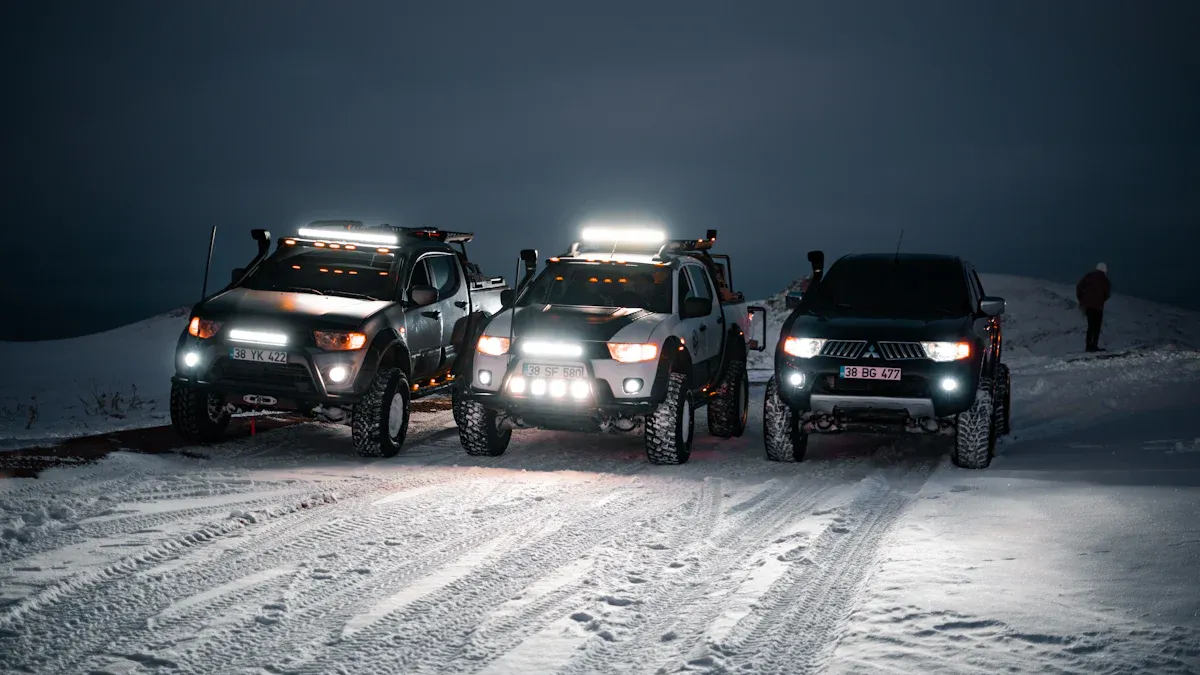
Picking the best LED light bar can really improve your lighting, whether for your car or home. Knowing the different types and their special features will help you choose wisely.
Types of LED Light Bars
LED light bars come in many types, each made for different uses. Here are some common types you might think about:
Straight LED Light Bars: These are flexible and can be put on many surfaces. They give a wide beam of light, which is great for off-road driving or lighting up big areas.
Curved LED Light Bars: These bars have a wider view because of their shape. They are great for cars, as they can fit the shape of the vehicle, making it look better and work well.
Mini LED Light Bars: Small and easy to set up, mini light bars are good for smaller cars or places where space is tight. They still shine brightly even though they are small.
Work Light Bars: Made for tough use, these light bars are strong and often have higher IP ratings for water and dust protection. They are great for building sites or outdoor fun.
When picking the best LED light bar, think about what you need. For example, if you drive in fog a lot, a light bar with a lower colour temperature can help you see better.
Key Features to Consider
When choosing an LED light bar, some important features can affect your choice. Here’s what to focus on:
Feature | Outdoor Use Considerations | Indoor Use Considerations |
|---|---|---|
Lighting Needs | Brighter light for seeing in open spaces | Softer light for mood in small areas |
Brightness | Needs higher lumen output for safety and visibility | Lower lumen output may be enough for comfort |
Area Coverage | Wide coverage to light up large spaces | Focused coverage to stop glare in smaller areas |
Beam Patterns | Spot beams for seeing far away | Flood beams for even light in closed spaces |
Installation Options | Flexible mounting choices for different outdoor setups | Easier installation methods for inside use |
Also, think about how much energy the LED light bar uses. LED light bars use less power than regular lights, making them a smart choice. They shine brighter, which is important for things like fog or driving at night. This energy saving not only helps you save money but also helps the environment.
When matching LED light bars to your needs, keep these points in mind:
Lumens: More lumens mean brighter light, which is key for night driving and off-road trips.
Colour Temperature: Lower temperatures give warmer light, good for fog; higher temperatures work better for clear night driving.
Beam Pattern: Spot beams for long distances, flood beams for close-up, and combo beams for flexibility.
IP Rating: Shows protection against dust and water; higher ratings mean better protection.
Durability and Build Quality: Look for strong materials and solid build.
Mounting Options: Make sure it fits your vehicle’s mounting points.
By thinking about these points, you can confidently choose the best LED light bar that fits your needs and improves your lighting experience.
Installation Techniques
Installing LED light bars might look hard, but you can do it well with the right steps. Follow these tips to make sure your installation is successful, whether it’s for your car or home.
Step-by-Step Installation
Before starting, gather all the tools and materials you need. Here’s what to collect:
Wrench: Keeps everything tight without harming the mounting parts.
Electrical Tape: Covers exposed wires to stop electrical shorts.
Wire Cutters: Cuts the wiring harness for a tidy fit.
Voltage Meter: Checks electrical connections to find problems.
Zip Ties: Holds wires in place to stop them from getting in the way.
Wiring Kit: Links the car’s electrical system to the LED light bar, making sure it works with power needs.
Now, follow these steps for an easy installation:
Drilling a Hole: Put on goggles for safety. Use tape to mark where to drill. Pick the right size drill bit for your mounting parts.
Mounting Brackets: Put the brackets on using bolts and nuts. Don’t tighten them all the way at first so you can adjust them later.
Wiring Harness Arrangement: Get to know the wiring harness parts. Lay the cables out carefully to avoid damage while installing.
Mounting the Switch: Pick a good spot for the switch. Connect it to the wiring harness tightly.
Connect Wires to the Light Bar and Test: Attach the light bar wires to the switch. Test everything to make sure it works right.
Double Check Your Work: Change the angle of the lights if needed. Make sure all screws are tight and secure.
Warm Prompt: Think about space, battery use, and warranty when choosing a light bar.
By following these steps, you can easily install your LED light bar, improving your off-road trips or lighting under cabinets.
Common Mistakes to Avoid
Steering clear of common mistakes is key for a good installation. Here are some things to watch out for:
Inadequate Planning and Layout: Measure and plan carefully. This helps avoid uneven lighting.
Incorrect Power Supply Selection: Match the power supply to the LED strips’ needs. This stops flickering or damage.
Poor Surface Preparation: Clean surfaces well. This helps the LED strips stick properly.
Neglecting Waterproofing Needs: Use waterproof materials in wet places. This stops damage to your installation.
Ignoring Heat Dissipation: Make sure there’s good airflow. Use heat sinks to control heat well.
Avoiding these common mistakes is key for a smooth and successful installation of LED light bars. Remember, wrong wiring can cause electrical problems, which create resistance and lower voltage to LED parts. This affects light output and efficiency.
By knowing these common errors, you can make sure your installation is safe and effective, letting you enjoy all the benefits of your LED light bar.
Placement and Positioning for LED Light Bars
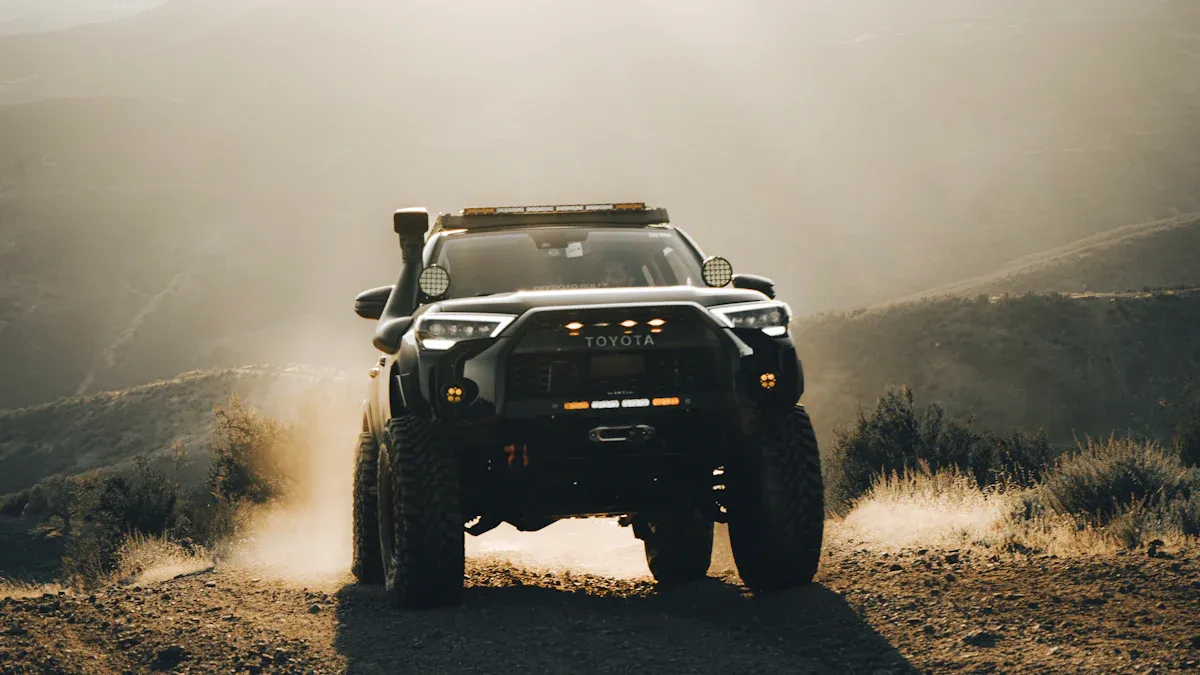
Choosing where to put your LED light bars is very important. It affects how well they work. Whether you are putting them on a vehicle or in your home, think about these tips for the best placement.
Vehicle Placement Tips
When you install LED light bars on your vehicle, follow these tips to see better:
Install on the Roofline: Put emergency lights close to the roof. This helps you see better and follows the rules.
Use Bumper Level for Secondary Lighting: Place extra lights at bumper height and as far out as you can. This helps light up the sides of your vehicle.
Implement Multi-Level Lighting: Think about using several light bars at different heights. This makes it easier to see, especially at night.
According to FMVSS 108, your LED lights should show certain colours based on what they do. For example, headlights must be white or amber, and taillights should be red. Following these rules stops glare for other drivers and keeps everyone safe.
Home Placement Tips
For home use, where you put LED light bars can make them work better and look nicer. Here are some good ideas:
Under-Cabinet Lighting: Mount light bars under kitchen cabinets. This gives you direct light for cooking, making it easier.
Proper Spacing: Keep enough space between lights to avoid dark areas. Aim for a distance that allows for a 50% overlap of beams.
Height Considerations: Mounting at the right height makes them work better and look good.
When placing puck lights, think about how long the under-cabinet space is and the light’s beam angle. A good rule is to place 90-degree puck lights about 20 inches apart. This way, you get even light without harsh glare.
By following these placement tips, you can find the best spots for your LED light bars. This will help you see better and create a bright space in both your vehicle and home.
LED Light Bar for Home Applications
LED light bars can change your home, especially in important areas like the kitchen and bathroom. These lights not only help you work better but also make your spaces look nicer.
Kitchen Installations
In the kitchen, good lighting is very important for safety and working well. Here are some tips to get even light everywhere:
Size: Measure your cabinets carefully to find the right size of light bars you need.
Colour Temperature Options: Pick from warm white (3000K), cool white (4000K), or day white (6000K) to set the right mood.
Dimming Options: Think about using wall dimmer switches for single colour lights or remote/app-based dimmers for changing colours.
Placement Techniques: Try out where to put the light bars before fixing them to make sure they work well and look good.
Installation Considerations: Use surface-mounted or recessed light bars, making sure the wiring is hidden and safe.
LED light bars use much less power than regular lights, which saves energy. They give bright and even lighting, which helps you see better and cuts down on shadows in the kitchen. Features like dimming and adjustable colours make it easier to see while doing different kitchen tasks. This makes them great for lighting up a kitchen island or under cabinets.
LED Light in Bathroom
In the bathroom, safety and usefulness are very important. Here are some key things to think about when putting in LED light bars:
Moisture Ratings: Pick LED lights that are safe for damp or wet places, especially near showers or baths, to avoid electrical problems.
Installation Guidelines: Get a qualified electrician to make sure everything follows local rules, including proper wiring and where to place fixtures.
GFCI Outlets: Use Ground Fault Circuit Interrupter outlets where water and electricity might meet to stop electric shocks.
LED light bars can make your bathroom better by giving bright, even light. This is really helpful for things like grooming in front of a lighted mirror. Make sure to choose lights with good waterproof ratings, like IP65 or higher, to handle the moist air.
By following these tips, you can use LED light bars in your home well, making bright, welcoming spaces that improve both how they work and how they look.
Maintenance and Troubleshooting
Taking care of your LED light bars helps them last longer and work well. Cleaning and maintaining them regularly can stop problems and keep your lights bright.
Cleaning and Maintenance Tips
To keep your LED light bars in good condition, do these things:
Turn off the power: Always unplug the light bar before cleaning it.
Remove the dust: Use a soft cloth or brush to get rid of dust and dirt.
Clean the lenses: Use a lens cleaner with a microfiber cloth. Don’t use rough materials that might scratch.
Check for residue: If you see any sticky stuff, use a mild soap solution to clean it off.
Dry thoroughly: Make sure the light bar is completely dry before plugging it back in.
Inspect the light: Regularly look for any damage or wear. If you see something odd, contact the manufacturer for help.
You should clean your LED light bars at least once every three months. If you live in a dusty place, clean them more often. For regular dusting, a soft, dry cloth or feather duster works well. For tough dirt, use a damp cloth and then a dry one.
Troubleshooting Common Issues
Even with good care, you might face some common problems with your LED light bars. Here’s how to find and fix them:
Flickering: This usually means there’s a power supply problem. Check the voltage to make sure it’s right.
Overheating: Make sure there’s enough airflow around the light bar. Overheating can cause it to break early.
Poor Wiring: Check all connections. Loose or broken wires can make the lights work badly.
Voltage Drop: Measure the voltage at the light bar. A big drop might mean there’s an issue with the wiring or power supply.
Incorrect Installation: If the light bar isn’t working right, check your installation steps to make sure everything is set up correctly.
If you notice flickering or dimming, try these troubleshooting steps:
Buy dimmable LED lamps: Make sure you choose lamps that can be dimmed.
Know the relationship between lamps and controls: Ensure your LED lamps work with the dimmer switches you have.
Buy reputable, well-tested products: Choose products from trusted brands that have been tested for compatibility.
Conduct a test installation: Check that the lamps work well with your dimmer switches.
By following these maintenance and troubleshooting tips, you can keep your LED light bars working well and bright, improving your lighting experience.
Following the best ways to install LED light bars is very important. It helps them work better and look good. By using the tips in this blog, you can get many long-lasting benefits:
LEDs use much less power than regular lights, which saves money.
A properly installed LED light bar can last over 50,000 hours, giving you bright and reliable light.
Switching to LED lights helps save energy, making it a smart choice for being eco-friendly.
We encourage you to use these tips when you install your lights. Share your thoughts or ask questions in the comments below. Your ideas could help others with their lighting choices! 🌟
FAQ
What is the best way to clean my LED light bars?
First, turn off the power to your LED light bars. Use a soft cloth to wipe away dust. If there is tough dirt, dampen the cloth with mild soap. Do not use rough materials, as they can scratch the surface.
How long do LED light bars typically last?
With good installation and care, LED light bars can last over 50,000 hours. This long life makes them a smart choice for lighting in cars and homes.
Can I install LED light bars myself?
Yes, you can install LED light bars on your own if you follow the right steps. Make sure you have the correct tools and materials. Always keep safety first by turning off the power before you start.
Are LED light bars energy-efficient?
Definitely! LED light bars use much less power than regular lights. This saves you money on your electricity bills and helps lower your carbon footprint.
Do I need a special switch for my LED light bars?
You can use regular switches, but a dimmer switch is better. It lets you change the brightness, helping you create the right mood for any space.
See Also
Fitting LED Light Bars Into Your Lightbox Signage
A Step-By-Step Guide To Wiring LED Light Bars
Understanding The Functionality Of LED Light Bars In Lightboxes
